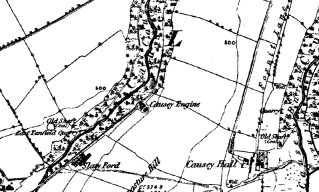Tanfield Railway
Located on Tyneside in North East England, Tanfield railway is the world's oldest existing railway, the home of railways. In 2000 the Tanfield Railway looks back as it features the first ever railway 275th anniversary celebrations. The railway is notable for its several distinct phases of coal haulage over several centuries. The first era started in 1725 and used small, two ton wagons hauled by horses on a wooden railway. The magnificent Causey Arch was built for the opening of this era and still survives today as a feature in the Causey Countryside Park. The second era started in 1839 and had rope worked inclines using steam engines or gravity replacing horses on the wagon haulage over the steep sections of the line. In 1881, locomotives replaced the horses and the two steam winding engines, continuing in use alongwith the gravity worked, rope sections to the closure of the Causey section of the line by British Railways in 1962. After several years of rebuilding, passenger trains started running in 1977 and on today's preserved railway, the 1725 section is used regularly. A fine selection of locos, carriages and wagons with local origins can be seen. Rebuilding of the railway was completed in 1992 with trains passing through the full length of the Causey Woods, giving a spectacular three mile journey. None of the inclines remain.
There were eight inclines on this railway
Redheugh Bank (Stationary engine hauled) NGR NZ231620
Lobley Hill (Self acting incline) 1 in 16 NGR NZ236610
Bakers Bank (Self acting incline) 1 in 11 NGR NZ211588
Bowes Bridge (Stationary engine hauled) NGR NZ209585
Gibraltar Bridge (Stationary engine hauled)1 in 44 NGR NZ207565
Causey Engine (Stationary engine hauled) 1 in 45 NGR NZ206562
Houghwell Burn Bridge (Stationary engine hauled)
White-le-head bank (Self acting incline) 1 in 11





